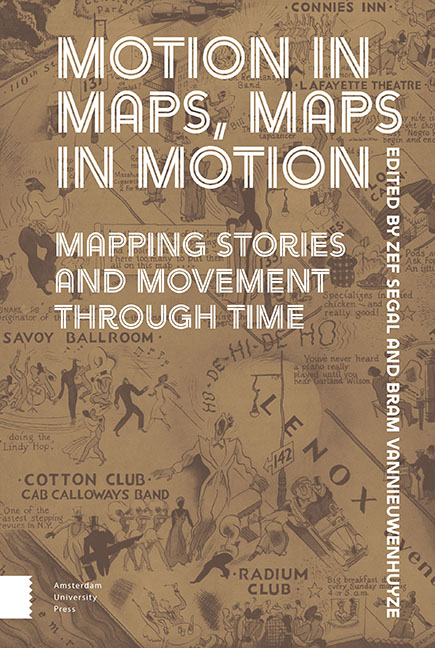Book contents
- Frontmatter
- Contents
- List of Figures
- List of Diagrams
- Introduction
- 1 The New World Map and the Old; The Moving Narrative of Joan Blaeu’s Nova Totius Terrarum Orbis Tabula (1648)
- 2 Entangled Maps; Topography and Narratives in Early Modern Story Maps*
- 3 Flow Mapping through the Times; The Transition from Harness to Nazi Propaganda
- 4 The Tensions of Heterochronicity on Cartographies of Imperial Motion in Japan
- 5 A School Atlas as a History Machine: The Bosatlas Online
- 6 Facebook Cartographies and the Mapping of Local History; Storied Maps from the American Middletown
- 7 ‘Change-of-State’ in the History of Cartography
4 - The Tensions of Heterochronicity on Cartographies of Imperial Motion in Japan
Published online by Cambridge University Press: 20 November 2020
- Frontmatter
- Contents
- List of Figures
- List of Diagrams
- Introduction
- 1 The New World Map and the Old; The Moving Narrative of Joan Blaeu’s Nova Totius Terrarum Orbis Tabula (1648)
- 2 Entangled Maps; Topography and Narratives in Early Modern Story Maps*
- 3 Flow Mapping through the Times; The Transition from Harness to Nazi Propaganda
- 4 The Tensions of Heterochronicity on Cartographies of Imperial Motion in Japan
- 5 A School Atlas as a History Machine: The Bosatlas Online
- 6 Facebook Cartographies and the Mapping of Local History; Storied Maps from the American Middletown
- 7 ‘Change-of-State’ in the History of Cartography
Summary
Abstract
This chapter analyses the ways, in which intersections between historical narratives and cartographic design shaped the spatial imaginary of Japanese audiences. It follows early modern, modern, and contemporary visualizations of two narratives of imperial movement in Japan: the eastward march of the legendary first Emperor Jinmu and the Korean campaign of the equally legendary Empress Jingu. The study cases show how cartography was enlisted for a range of purposes, from confident depictions of exemplary movements to dynamic trajectories that accommodated multiple points of view. The study thus provides an example of the diagnostic value of historical motion maps as a litmus test for the agendas to which historical and geographical knowledge were employed by different ideological positions.
Keywords: Japan; heterochrony; imperial; narrative
Introduction
Just like a mountain climber, the historian needs detailed and accurate maps. The mountain climber can fortunately search and obtain the superb maps produced by the Land Survey Department of the [Japanese] Imperial Army. But where is the historian to search for such maps?
This is the beginning of an encomiastic review of a 1935 historical atlas in a Japanese newspaper. The argument relies on the contrast between maps produced by professional cartographers and those made for the use of historians. But these apparent opposites also share structural similarities that rely on shared assumptions. The first is the assumption of a stable object of study such as the history of Japan. Since the 1960s, this has been challenged both by insights into the social constructedness of history, and, in the case of Japan, by unpacking the variability of the term ‘Japan’ itself. The second assumption is that of the constancy of time and space as epistemological categories whose reality is to be captured by maps. However, it is now increasingly clear that history is constituted by overlapping ‘heterochronicities’, or ‘multiple temporalities’. This renders problematic attempts at mapping a universal time frame.
The case of East Asia is especially poignant, since it developed autonomous temporal and spatial categories that, in their turn, evolved over time. For example, when Jesuit scholars brought back news of Chinese chronology to Europe in the seventeenth century, European historiography had to reconsider its much shorter Bible-based chronology.
- Type
- Chapter
- Information
- Motion in Maps, Maps in MotionMapping Stories and Movement through Time, pp. 105 - 128Publisher: Amsterdam University PressPrint publication year: 2020

